Renaissance Star Early Literacy® – Overview
What is Renaissance Star Early Literacy testing?
The Renaissance Star Early Literacy Test is a valuable tool for educators to assess and monitor early literacy skills in young children. By identifying students who may need extra support and providing targeted interventions, the test can help ensure that students have the foundation they need to become successful readers. This is especially important for those children that are lacking foundational skills and literacy experience as they enter school.
Star Early Literacy is aligned with state standards. The questions are multiple-choice, online, and adaptive. During the school year, the test may be given as often as weekly to monitor a child’s progress, but most often, it is administered in the fall, winter, and spring.
Some schools use the Star Early Literacy Test to identify students for gifted programs.
Some quick facts about the Star Early Literacy Test
| How long does the test take? | The test takes 15-20 minutes to administer. |
| How is the test given? | The test is taken on an individual computer, Chromebook, iPad, or tablet that is at least 7’’. |
| How are the questions structured? | All questions are multiple-choice, with 3-4 answer choices per question. |
| How are test results given? | The score is calculated at the end of the test and given to the student’s teacher. The student is given a scaled score, skill set score, national norm score for grade equivalent, and a percentile rank score. |
Star Early Literacy is given to younger students who may not be ready to take the Renaissance Star Test. It is used for students in Pre-K to 3rd Grade. Younger students start with this test and their score indicates one of four reading levels:
- Early Emergent Reader
- Late Reader
- Transitional Reader
- Probable Reader
The following skills are assessed at the Early Literacy Level:
Foundational Skills
- General Readiness (Pre-K to K)
- Graphophonemic Knowledge (Pre-K to 1st Grade)
- Phonemic Awareness (Pre-K to 1st Grade)
- Phonics (K to 3rd Grade)
- Structural Analysis (1st to 3rd Grade)
- Vocabulary (K to 3rd Grade)
Comprehension and Meaning
- Sentence – Level Comprehension (1st to 3rd grade)
- Paragraph – Level Comprehension (1st to 3rd grade)
Numbers and Operations
- Early Numeracy (Pre-K to 3rd Grade)100 Free Practice Questions
Star Early Literacy Test Sample Questions:
Pre-Kindergarten:
1. These letters are in order. Choose the letter that is missing.

Answer: 1st bubble (an example of Graphophonemic Knowledge)
2. Which letter is different from the others? Choose the letter that does not match the others.
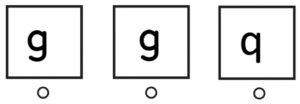
Answer: 3rd bubble (an example of General Readiness)
3. Listen to this word. h – ut. Choose the picture that has the name that I am saying: h – ut.
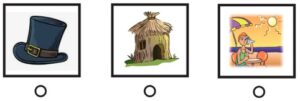
Answer: 2nd bubble (an example of Phonemic Awareness)
Kindergarten:
1. Which word is the longest?
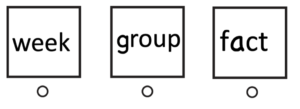
Answer: 2nd bubble (an example of Phonemic Awareness)
2. Choose the letter that is the last sound you hear in the picture.
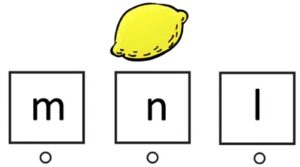
Answer: 2nd bubble (an example of Phonics)
3. Which of these is a word?
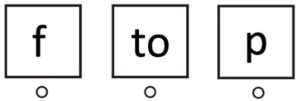
Answer: 2nd bubble (an example of Graphophonemic Knowledge)
1st Grade:
1. Choose the word that means the opposite of dark.

Answer: 1st bubble (an example of Vocabulary)
2. Choose the word that belongs in the blank.
We were tired, so we went to _________.

Answer: 1st bubble (an example of Comprehension)
3. Choose the picture that does not rhyme with…funny.

Answer: 2nd bubble (an example of Phonemic Awareness)
2nd Grade:
1. The numbers are three and four. Choose the number below that shows what these two numbers total when you add them together.
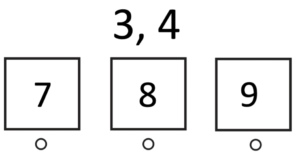
Answer: 1st bubble (an example of Early Numeracy)
2. Look at the word. Choose the answer that shows the correct way to divide the word by its syllables. Remember that a syllable is a single, unbroken sound of a written (or spoken) word.

Answer: 1st bubble (an example of Structural Analysis)
3. Choose the word that best completes the sentence.
Bill went across a ______ when he drove over the lake.

Answer: 2nd bubble (an example of Comprehension)
3rd Grade:
1. In which word does the vowel “o” sound the same way it sounds in the word “smoke”? 
Answer: 1st bubble (an example of Phonics)
2. What time is it when both hands of a clock are on the 6?
a. 6:00
b. 6:15
c. 6:30
d. 6:06
Answer: c (an example of Early Numeracy)
3. Choose the number that comes next in this series.
39 38 36 33 29 ___
a. 21 b. 24 c. 27 d. 20
Answer: b (an example of Early Numeracy)
See if TestingMom.com supports your child’s test by your school district. If you don't see your child's school district listed, check with us! We have practice for other tests as well.



Tell us about your experiences